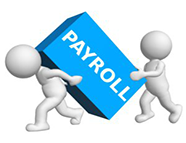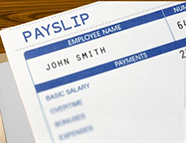Employment Handbook For Payroll System In Singapore
Employment Handbook is a useful information which we summary out to help employee know more and protect themselves while working. This handbook included the basic of Employment Act, the leaves an employee should be entitled, the levy, CPF which included CPF contribution employee and employer. We also prepared on how to calculate CPF. Not only for employee themselves, HR Singapore may also use CPF calculator Singapore or CPF contribution calculator to calculate CPF for the staff.
Besides this, we also talk about Singapore salary or salary in Singapore, this included how to calculate the salary and OT pay. We prepared a guideline on how to use MOM OT calculation to calculate the OT. Rest day explanation also provided.
In addition, we also talk about SDF Singapore and SDL which are Skills Development Fund (SDF Singapore) and Skills Development Levy (SDL) System.
Last but not least, tax Singapore. There are tax clearance which employee need to use tax clearance calculator to calculate and submit a form IR21 to declare the tax clearance.
Lastly, we included some informative Singapore Payroll Services companies for your reference if you are finding a suitable service provider for your payroll.
A) Employment Act For Payroll In Singapore
The Employment Act is Singapore’s main labour law. It provides for the basic terms and conditions at work for employees covered by the Act. Foreign employees holding a work pass are also covered by the Employment of Foreign Manpower Act, which outlines an employer’s responsibilities and obligations for employing foreigners. Who is covered by the Employment Act? You are covered in Employment Act if you are an employee working under a contract of service with an employer. It covers local and foreign employees. An employee can be employed in the following terms:
- Full-time
- Part-time
- Temporary
- Contract
An employee can be paid on the following basis:
- Hourly
- Daily
- Monthly
- Piece-rated
However, you are not covered in Employment Act if you are employed as a:
- Manager or executive with monthly basic salary of more than $4,500.
- Domestic worker.
- Statutory board employee or civil servant.
B) Annual leave and sick leave based on Payroll Singapore
How many days of paid annual leave and sick leave will you be entitled under Section 4 of the Employment Act? The number of days of paid leave you entitle is according to your employment contract. Inside the contract should have stated a clear number of days you will be entitled, and it should not be less than the following.
C) Levy for Employment Handbook Guide In Singapore
Levy for all industry sector increases, except Marine sector and Process sector.
D) Singapore Central Provident Fund(CFP) in Employment Handbook for Payroll Singapore
The Central Provident Fund (CPF) is a Singapore government-funded social security savings scheme for all Singaporeans and permanent residents. It requires each participant to pay the amount monthly. CPF consists of three accounts, Ordinary Account (OA), Special Account (SA) and Medisave Account. Below is a guideline on how to calculate CPF. Table shows respective CPF employee contribution and CPF employer contribution. CPF employee contribution is 20% if 55 years old and below. For who 55 years old to 6o years old, CPF employee contribution is 13%. Those who are above 60 years old to 65 years old, CPF employee contribution is 7.5%. Where, those who are above 65 years old, CPF employee contribution is 5%.

There are some CPF calculator Singapore or CPF contribution calculator on internet providing easier way to calculate CPF. You can use these CPF calculator Singapore or CPF contribution calculator to calculate CPF.These CPF calculator Singapore or CPF contribution calculator require you to input your basic information such as age and salary in order to calculate CPF correctly. HR Singapore may also need CPF calculator Singapore or CPF contribution calculator to calculate CPF for the staff. For more details information, please visit the following links: https://www.cpf.gov.sg/Assets/Members/Documents/Jan2016_Con_Rate_Page.pdf
E) Calculation of wages and overtime pay fro payroll singapore
What is a salary? Salary refers to remuneration, including allowances, paid for work done under a contract of service. Normally HR Singapore is responsible for company staffs’ salary in Singapore. They use Singapore payroll software which is salary calculator Singapore to calculate the Singapore salary. It does not include:
- The value of accommodation, utilities or other amenities.
- Pension or provident fund contribution paid by the employer.
- Travelling allowance.
- Payments for expenses incurred during work.
- Gratuity payable on discharge or retirement.
- Retrenchment benefits.
Payroll cycle If you are covered under the Employment Act, your employer must pay your salary at least once a month. . Normally HR Singapore is responsible for company staffs’ salary in Singapore. They use Singapore payroll software which is salary calculator Singapore to calculate the Singapore salary. They can also pay at shorter intervals if they choose to. Salary must be paid: Within 7 days after the end of the salary period For overtime work, within 14 days after the end of the salary period Your final Singapore salary payment could vary depending on the following situations:
| In this situation | Your final salary must be paid |
| Employee resigns and serves the required notice period | On the last day of employment. |
| Employee resigns without notice and doesn’t serve the notice period | Within 7 days of the last day of employment. |
| Dismissal on grounds of misconduct | On the last day of employment. If this is not possible, then within 3 working days from date of dismissal. |
| Employer terminates the contract | On the last day of employment. If this is not possible, then within 3 working days from date of termination. |
If your contractinvolves commission, how and when the commission is paid depends on what is in your employment contract or existing policies or practices. If you’re a foreign worker who had just left employment, your employer may withhold your salary for the last month fortax clearance. Tax clearance calculator can be used to calculate the tax clearance Salary Deduction If you are covered under the Employment Act, your employer can deduct your salary only for specific reasons or if required by authorities. Normally HR Singapore is responsible for company staffs’ salary in Singapore. They use Singapore payroll software which is salary calculator Singapore to calculate the Singapore salary.
When deductions may be required
Your employer may be required to deduct your Singapore salary:
- By court order, or other valid authority.
- If your employer is declared an agent for the recovery of income tax, property tax or goods and services tax (GST) payable by you.
Note: Any compensation should generally be recovered directly from you, rather than through a salary deduction.
Types of deductions allowed
Your employer can deduct your Singapore salary only for the following reasons:
- For absence from work. For a monthly-rated employee, your salary may be deducted for authorised and unauthorised absence. Calculate your deductions for:
- For damage or loss of goods or money. Your salary will be deducted if you damage or lose goods or money that you are responsible for. Before deducting your salary, your employer should:
- Hold an inquiry to determine if you are directly at fault.
- Not make any deductions until you have had the opportunity to explain the cause of the damage or loss.
- Not deduct more than 25% of your 1 month’s salary. The deduction must be made as a one-time lump sum payment.
- For cost of meals supplied at your request.
- For supplying accommodation, amenities and services that you have accepted. Deductions must not exceed the value of the item supplied and 25% of your 1 month’s payable salary.
- For recovering advances, loans or overpaid salary.
-
- For advances, your employer can deduct your salary in instalments spread over not more than 12 months. Each instalment should not exceed 25% of your salary for the salary period.
- For loans, your employer can deduct your salary in instalments. Each instalment should not exceed 25% of your salary for the salary period.
- For overpaid salary, your employer can recover the full amount from you.
- For CPF contributions.
- For contributions to a scheme at your written request. The scheme must be lawfully established for the benefit of employees and approved by the Commissioner for Labour. Examples include a superannuation scheme or provident fund.
- For payments to any registered co-operative society with your written consent.
- For any other purpose. Your employer must first get approval for the deductionfrom the Minister for Manpower.
-
-
Maximum amount of deductions
Your employer cannot deduct more than 50% of your total Singapore salary payable in any one salary period. This does not include deductions made for:
- Absence from work.
- Recovery of advances or loans.
- Payments, with your consent, to registered co-operative societies for subscriptions, entrance fees, loan instalments, interest and other dues payable.
However, when your contract of service is terminated, any deduction from your last salary payment may exceed 50%. This enables your employer to recover any sum of money you owe.
Overtime Pay Calculation Singapore salary include OT pay. You can need to use MOM OT calculation to calculate the OT. Overtime work is all work in excess of the normal hours of work (excluding breaks). You can claim overtime if you are:
- A non-workman earning up to $2,500.
- A workman earning up to $4,500.
The overtime rate payable for non-workmen is capped at the salary level of $2,250, or an hourly rate of $11.80. For overtime work, your employer must pay you at least 1.5 times the hourly basic rate of pay. Payment must be made within 14 days after the last day of the salary period. Here we show some example based on MOM OT calculation. A non-workman earns $2,400 a month and works 2 hours of overtime. The overtime pay is: $11.80 x 1.5 x 2 hours = $35.40
How overtime pay is calculated
Based on MOM OT calculation, Overtime pay is calculated as follows:
- Hourly basic rate of pay x 1.5 x number of hours worked overtime
The hourly basic rate of pay is calculated as follows:
| For this category of employee | Hourly basic rate of pay is |
| Monthly-rated employee | (12 x Monthly basic rate of pay) / (52 x 44) |
| Daily-rated employee | Daily pay at the basic rate / Working hours per day |
| Piece-rated employee | Total weekly pay at the basic rate of pay / Total number of hours worked in the week |
Maximum hours of work
As an employee, you are not allowed to work more than 12 hours a day. However, your employer can ask you to work more than 12 hours a day in the following circumstances:
- An accident or threat of accident.
- Work that is essential to the life of the community, national defence or security.
- Urgent work to be done to machinery or plant.
- An interruption of work that was impossible to foresee.
Working more than 12 hours a day (overtime exemption)
If an employer requires employees to work more than 12 hours a day (up to a maximum of 14 hours), they must apply for an overtime exemption.
Maximum hours of overtime
An employee can only work up to 72 overtime hours in a month. Employers can apply for an exemption if they require employees to work more than the 72 hours of overtime in a month. Note: these work activities will not be granted exemption. Work on rest days or public holidays is not counted in the 72-hour overtime limit, except for work done beyond the usual daily working hours on those days. Such extra hours are included in the 72-hour limit. Overtime on a rest day or public holiday is calculated as follows:
- (Hourly basic rate of pay x 1.5 x Number of hours worked overtime) + (Rest day or public holiday pay)
You need to use MOM OT calculation to calculate the OT.
Rest days
A rest day comprises 1 whole day (midnight to midnight). It is not a paid day. For shift workers, the rest day can be a continuous period of 30 hours. A 30-hour rest period that starts before 6pm on a Sunday is considered as 1 rest day within the week, even if it extends into the Monday of the following week. A week is continuous period of 7 days starting from Monday and ending on Sunday. Your employer cannot compel you to work on a rest day, unless under exceptional circumstances.
When rest days can fall
The employer determines the rest day, which can be on a Sunday or any other day. If the rest day is not a Sunday, your employer should prepare a monthly roster and inform you of the rest days before the start of each month. The maximum interval allowed between 2 rest days is 12 days. How pay for work on a rest day is calculated Payment for work on a rest day is calculated as follows:
| If work is done | For up to half your normal daily working hours | For more than half your normal daily working hours | Beyond your normal daily working hours |
| At the employer’s request | 1 day’s salary | 2 days’ salary | 2 days’ salary + overtime pay |
| At the employee’s request | Half day’s salary | 1 day’s salary | 1 day’s salary + overtime pay |
F) Skills Development Fund (SDF Singapore) for payroll system in Singapore
The Skills Development Fund (SDF Singapore) support is used to support workforce upgrading programmes and to provide training grants to employers when they send their employees to attend training. The SDF is administrated by the SkillsFuture Singapore Agency (SSG). SDF Singapore Funding rates may differ for various courses. Employers will need to apply for course fee funding and Absentee Payroll Funding via SkillsConnect at least one day before course commencement. SDF Singapore Eligibility Criteria To be eligible for SDF support,
- Companies must be registered or incorporated in Singapore
- Supportable cost components (such as course fees) must be fully sponsored by companies
- Trainees must be employees who are either Singapore Citizens or Singapore Permanent Residents (SPR)
Trainees must have achieved at least 75% attendance and have sat for all examinations if the course leads to certification Attendance If the participant fails to meet at least 75% attendance and/or fails to sit for an examination or for any other reason where SDF funding is not approved, the company is required to reimburse Service Quality Centre the SDF supported portion.
The Skills Development Fund (SDF Singapore) support is used to support workforce upgrading programmes and to provide training grants to employers when they send their employees to attend training. The SDF is administrated by the SkillsFuture Singapore Agency (SSG). SDF Singapore Funding rates may differ for various courses. Employers will need to apply for course fee funding and Absentee Payroll Funding via SkillsConnect at least one day before course commencement. SDF Singapore Eligibility Criteria To be eligible for SDF support,
- Companies must be registered or incorporated in Singapore
- Supportable cost components (such as course fees) must be fully sponsored by companies
- Trainees must be employees who are either Singapore Citizens or Singapore Permanent Residents (SPR)
Trainees must have achieved at least 75% attendance and have sat for all examinations if the course leads to certification Attendance If the participant fails to meet at least 75% attendance and/or fails to sit for an examination or for any other reason where SDF funding is not approved, the company is required to reimburse Service Quality Centre the SDF supported portion.
G) Skills Development Levy (SDL) System in Employment Handbook In Singapore
What is SDL? As required by law under the Skills Development Levy (SDL) Act, employers are required to pay a monthly SDL for all employees rendering services in Singapore, including foreign employees and employees employed on casual, part-time, or temporary basis.
Domestic servants, gardeners or chauffeurs are exempted from the SDL Act. The SDL payable is at 0.25% of the monthly remuneration for each employee, with the minimum payable of $2 (for an employee earning less than $800 a month) and a maximum of $11.25 (for an employee earning more than $4,500 a month).
All SDL collected are channelled to the Skills Development Fund (SDF) which is used to support workforce upgrading programmes and to provide training grants to employers when they send their employees to attend training under our national Continuing Education and Training system.
The SDL and SDF are administrated by the SkillsFuture Singapore Agency (SSG). SDL Calculator is provided to calculate the SDL. SDL Calculator requires user to enter some important information in order to calculate SDL Payable.
The information need by SDL Calculator including year, range of month, Number of Employees who earn up to $800.00 per month, Total remuneration for employees earning between $800.00 & $4500.00 per month and Number of employees who earn $4500.00 per month & above.
H) Tax for Employee in Singapore
Income tax Singapore involves both individual income tax and corporate income tax. Income earned both inside and outside the country for individuals and corporate entities is taxed. Individual income tax in Singapore is payable on an annual basis, it is currently based on the progressive tax system (for local residents and tax residents), with taxes ranging from 0% to 22% since Year of Assessment 2017.
The Year of Assessment (YA) is based on the calendar year commencing 1 January to 31 December, and is payable on a preceding year basis, whereby taxes payable per year of assessment is based on income earned in the preceding calendar year. Taxation is based on the source principle, in which only income earned at source, in this case in Singapore, or those derived from overseas but received in Singapore, are taxable.
Any income arising from sources outside Singapore and received in Singapore on or after 1 January 2004 by an individual (other than partners of a partnership) is exempt from tax. This system has the potential to allow for tax avoidance practiced by individuals who derive income from abroad, gain tax exemptions via their non-resident status there, and use this income outside Singapore.
This system has the potential to allow for tax avoidance practiced by individuals who derive income from abroad, gain tax exemptions via their non-resident status there, and use this income outside Singapore. Expatriates and foreign workers in Singapore are also liable for paying income tax Singapore.
Corporate income tax Singapore like individual income tax is payable on annual basis. However, foreign income earned by a Singapore company may require dual taxation once in the income origin country and in Singapore. In such a case, companies can claim Foreign Tax Credit (FTC) payable on the same income.
Corporate income tax Singapore like individual income tax is payable on annual basis. However, foreign income earned by a Singapore company may require dual taxation once in the income origin country and in Singapore. In such a case, companies can claim Foreign Tax Credit (FTC) payable on the same income.
I) Payroll Singapore Services
Here we prepare some nice payroll to help HR Singapore calculate salary, calculate CPF and tax in easier way. There are also online payment software doing the payroll Singapore job. Some payroll software Singapore company are Info-Tech, INFOTIME, INFOPAY, Times Software, Times Pay / HR 8.0, Times E-Payroll, Times E-Leave, Sage EasyPay, Sage EasyTime, Sage UBS Payroll, Whyze, Payday, eACCPAY, PayrollServe, Ready Software, Ready Pay, SAP, SMEPayroll, IQDynamics, MYOB, GPayroll, TimeSoft and Smart Touch Technology.



